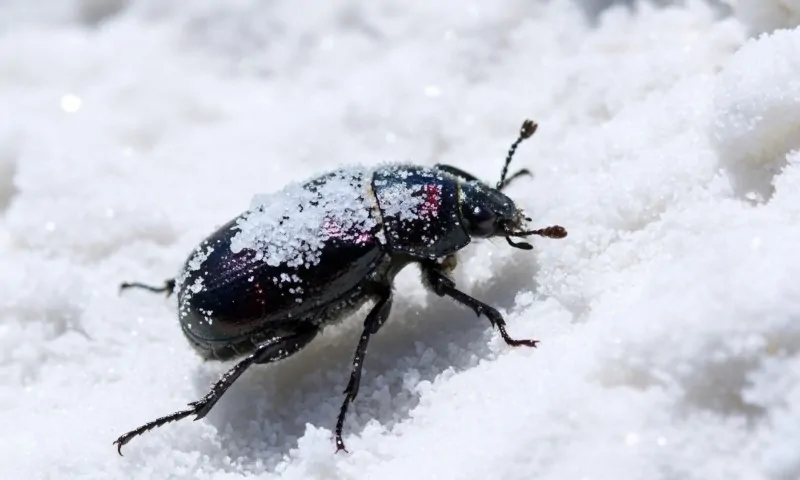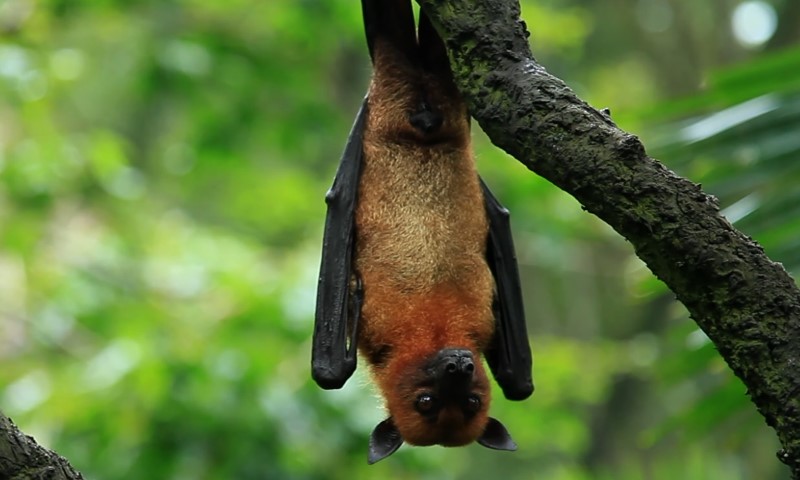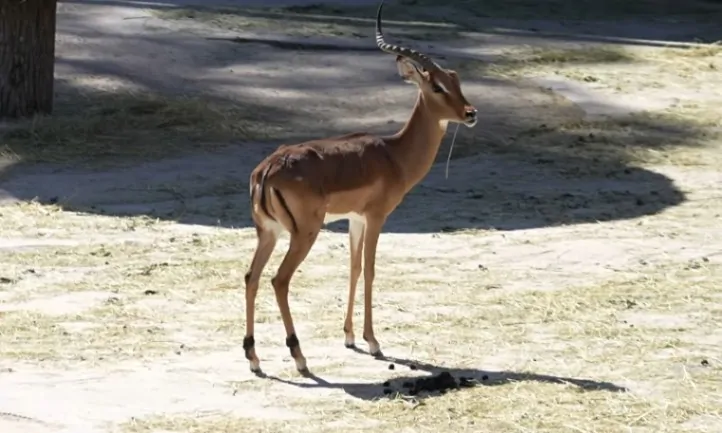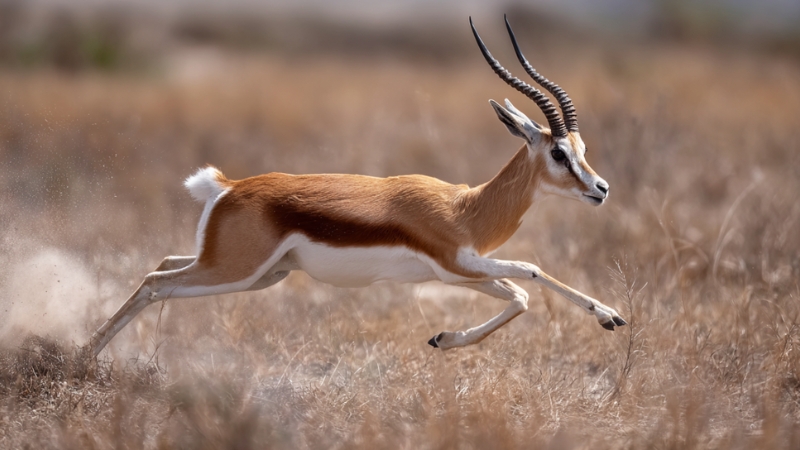Do animals get sunburned? The answer is yes. Many animals, especially those living in exposed environments such as deserts, can suffer from sun damage.
The sun affects skin across species, and desert animals rely on unique features for survival. Their anatomy and behavior reflect generations of adaptation to severe conditions where UV rays strike most intensely.
Whether coated in feathers, fur, or scales, each species developed specific features that balance heat management with daily activity.
We will explore how skin, fur, and behavior help reduce exposure and mitigate the effects of extreme heat. It also examines why particular species endure better than others and what people can learn from observing animal survival in some of the harshest environments on Earth.
How Sunburn Affects Animal Skin
Sunburn in animals occurs when ultraviolet radiation damages skin cells. Light-skinned and hairless areas are most at risk. Just like people, animals with pale or thin coats show more redness and irritation.
Domestic dogs with white fur, like bull terriers or dalmatians, often suffer sunburn on their ears, noses, and bellies. Some reptiles and amphibians also experience peeling skin and ulcers after prolonged exposure to the sun.
Sunburn in animals may go unnoticed due to their instinct to hide pain. In nature, showing weakness draws attention from predators. Over time, prolonged sun exposure can also weaken the immune system.
Damaged skin becomes more prone to infection, parasites, and secondary conditions. Unlike humans, animals cannot apply treatment themselves, so prevention becomes the only proper defense.
Desert Animal Skin Protection
Desert species rely on skin defense for their daily survival. Their survival depends on managing heat and sun damage—thick fur, tough scales, and reflective coloring offer built-in protection.
Camels have thick eyebrows, long lashes, and rough lips. Their sandy coat reflects sunlight and shields their body from burns. Fennec foxes use their large ears to dissipate heat and have light-colored fur that reflects sunlight.
Some desert animals have specialized skin oils that scatter sunlight, allowing them to survive in harsh environments. These oils act like a natural diffuser, spreading rays across the skin surface and reducing intensity.
Meerkats, which live in sandy environments, have dark eye patches that cut glare and shield their vision, allowing them to forage without eye strain. Even coloration placement plays a role, with darker patches often covering areas that face the sun most.
A Tortoise in Tucson
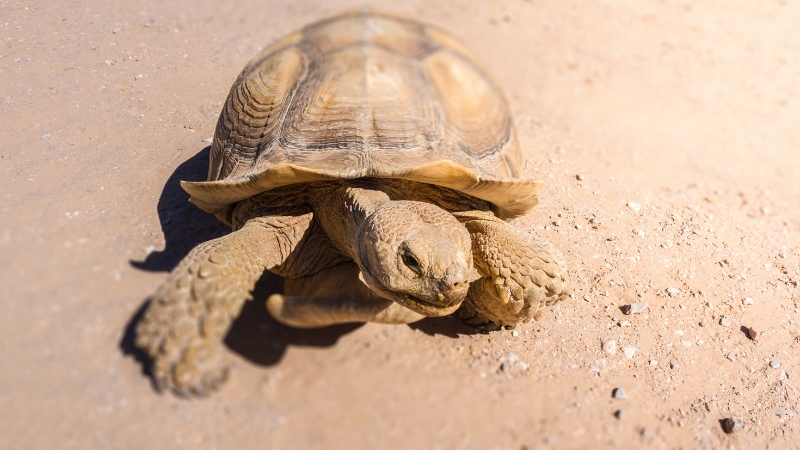
I spoke with Lila, a reptile keeper in southern Arizona, who has cared for a desert tortoise for over twelve years. She explained how the tortoise becomes sluggish by midmorning and retreats into a shaded burrow she built herself beside a rock wall.
Lila said, “If I ever forget to mist the plants around her space, she moves to the deepest corner and will not come out until late afternoon. She knows how to listen to the sun.”
Her tortoise developed patches of thickened skin over the years, which helped protect it from surface burns. Lila noticed that on hotter days, the tortoise soaked longer in the shallow water bowl before moving.
She added, “She shows no panic, only calculation. Every choice keeps her from harm. Watching her taught me to check my exposure better.”
Wildlife in Extreme Heat
Animal sun protection adaptations include more than just skin. Behavior plays a significant role. Desert animals are most active at dawn and dusk. They rest during midday.
Addax antelopes live in the Sahara. Their pale coat reflects heat, and they conserve water with efficient kidneys. They lie still for hours under rock ledges to escape direct sunlight.
Some desert birds, like sandgrouse, soak their breast feathers in water and carry it back to their chicks. This method cools the young and provides hydration without long exposure.
Small mammals such as jerboas travel in short, rapid bursts between shaded spots, covering distance without lingering under full sun. Behavioral adjustments extend to reproductive timing as well, with many species avoiding birth during peak heat seasons to protect vulnerable young.
Do Dogs Get Sunburned in Desert Conditions?
Yes, dogs get sunburned. In deserts, this risk increases. Dogs with thin or white fur are more susceptible to high UV exposure. The nose, ears, and underbelly burn fastest.
Veterinarians in Arizona treat dogs for blistered skin every summer. Pet owners often overlook heat damage until it causes visible pain.
Protective shirts or mineral-based creams can help, but behavioral control is more effective. Early walks and shaded play reduce sun damage.
Some desert breeds, such as the Canaan dog, have developed traits that enable them to resist heat and sun more efficiently. They have a coarse double coat that insulates the skin and limits direct exposure.
Stray dogs in urban deserts often seek out parked cars, construction debris, or drainage ditches for shade, showing how instinct adapts even in human-altered landscapes. Skin conditions caused by sun exposure in dogs can worsen when combined with dehydration, making water availability a crucial factor in prevention.
Animal UV Protection
Melanin in the skin plays a crucial role in protecting animals from UV radiation. Dark skin absorbs more UV rays, protecting underlying tissues. Many desert reptiles darken with age to improve survival.
Armadillos have thick armored plates that protect them from sunlight. Lizards, such as the desert iguana, adjust their color based on temperature. Pale skin cools the body in high temperatures, while darker skin warms it up when temperatures drop.
Butterflies and moths in arid climates often feature wings with microstructures that scatter UV rays, minimizing heat buildup. In fish, such as desert pupfish, scales reflect light while enzymes in their mucus layer break down UV radiation.
Even desert amphibians with semi-permeable skin produce secretions that reduce cellular damage. Animal UV protection functions across many layers, not only on the surface.
Evolution of Skin in Desert Species
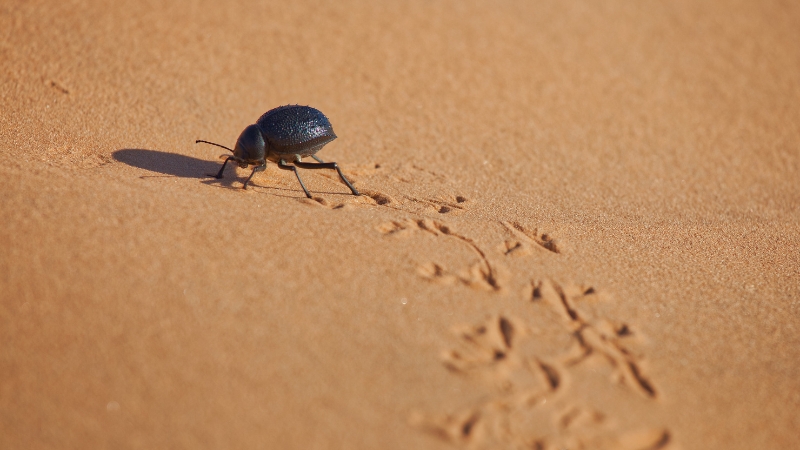
Desert species evolved skin adapted to their harsh environment. Generations of exposure shaped their appearance and habits. Thick outer layers, high pigment concentration, and adequate water retention provide long-term protection.
The Sahara silver ant can run on hot sand and reflect sunlight off its metallic body. Their hair reflects infrared light and helps reduce internal body temperature. This allows them to scavenge under the extreme sun for only a few minutes per day.
Rodents, such as the naked mole-rat, which live underground, exhibit reduced pigmentation and extreme skin tolerance due to their years spent beneath arid soil. Their evolution demonstrates that UV protection often begins with habitat control.
Insects such as beetles evolved waxy shells that combine reflectivity with water conservation, showing that desert evolution pairs sun defense with moisture balance. Even cacti demonstrate similar traits, reflecting the pattern of adaptation across entire ecosystems.
How Animals Survive in Hot Climates
Animal survival in hot climates involves skin, but also diet, timing, and movement. Some animals feed only at night. Others shift habitats seasonally to follow milder zones.
Gazelles migrate across cooler sand valleys. Bats in desert caves drink condensed water from the walls of the caves. Insects fly close to the ground cover and leave areas with no shade.
Some animals store fat in isolated body areas, such as tails or humps, which reduces internal heat and allows for localized cooling. Ground squirrels in the Mojave, for example, press their bellies against more remarkable rocks to lower their body temperature.
Even sound plays a role, as many animals limit vocal activity during peak heat to conserve energy and water. Each tactic fits into a broader system of thermal control.
Heat Resistance in Desert Animals
Scientists measure heat resistance by studying animal body temperatures, skin response, and behavior. Desert species can tolerate higher core heat levels. They also show slower water loss rates.
Species
Max Body Temp
Skin Feature
UV Protection Strategy
Camel
41.5 C
Dense fur, sand color
Reflects light, stores water
Fennec Fox
40 C
Light fur, ear cooling
Nocturnal animals avoid the sun
Bearded Dragon
42 C
Scaled skin
Basking control, burrows
Addax Antelope
45 C
Pale coat
Shade resting, low activity
Desert Iguana
43 C
Color shifting
Adjusts skin tone to temp
Other traits include low resting metabolic rates and high sweat thresholds. Some desert birds increase blood flow to their beaks or legs to radiate heat.
The desert hedgehog, unlike its relatives, remains active in higher temperatures due to specialized kidney function that reduces water loss. Every metric scientists study reflects years of selection pressure shaped by the sun.
Sun Damage in Animals
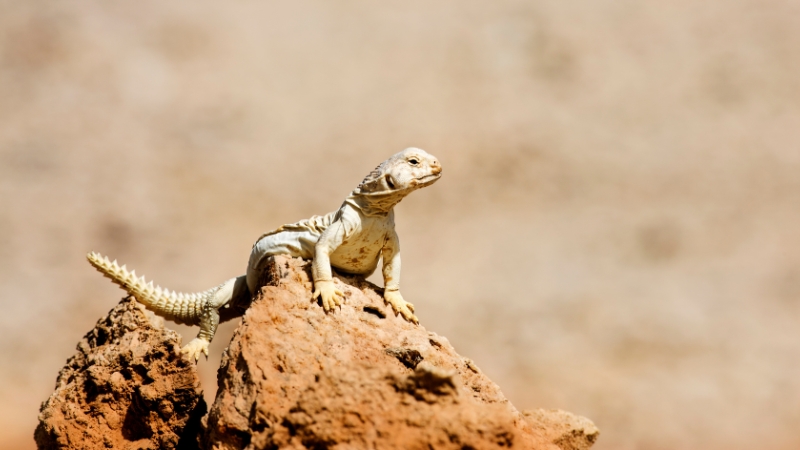
Sun damage in animals builds over time. Scaly patches, peeling, infections, and skin tumors appear in older individuals. Studies of desert monitor lizards in 2022 revealed that 1 in 5 individuals had scarred skin due to sun exposure.
Dogs with repeated sunburn develop crusty patches. Cattle left exposed suffer eye damage and growth issues. Wild species often mask pain, which can hide the problem until disease sets in.
Research also shows genetic damage from chronic UV exposure. DNA changes in skin cells increase the risk of cancer in species with low pigment.
Desert rodents near polluted sites exhibit higher mutation rates due to the combined effects of sun and chemical exposure. Conservation efforts now include UV risk in habitat assessments, especially for animals relocated due to development.
Personal Reflections on Wildlife in Heat
I remember standing near a desert fox den in central Tunisia in 2018. The sun felt brutal even before noon. I watched as a small fox darted between stones, always staying within shaded gaps.
It never paused long in open sand. Even in silence, its body showed deep memory of heat.
Spending time in Namibia also showed me how animals shape life around the sun’s defense. Oryx herds rose before sunrise and vanished by the time light flooded the dunes. Each track in the sand marked a precise decision to avoid burning light.
Those experiences made me more aware of my behavior under the sun. I learned to respect heat not as discomfort but as a real threat. Desert animals live by rules that apply to us, though we often ignore them.
Desert Mammals and Sun Exposure
@everythingiq Explore the incredible adaptations of plants and animals in desert ecosystems. Discover how life thrives against all odds! #DesertEcosystem #NatureWonders #FloraFauna #SurvivalSkills ♬ original sound – EveryThingIQ
Desert mammals show clear logic in avoiding sun exposure. People often ignore the warning signs until after the damage has occurred. Wildlife offers a living map of safer patterns.
Choosing early hours, drinking more water, and staying near shade follow the same logic as desert species do. Wearing loose clothes mimics how fur works. Blocking UV rays starts with body awareness.
Even in cities, sun exposure mirrors the dangers found in deserts. Urban areas with limited tree cover heat up faster, and skin damage rates in those zones are increasing.
Observing desert animals may help doctors develop more effective public health advice for managing sun-related risks. Nature has already written the manual, and it begins with observing who survives longest in the light.
Final Thoughts
Yes, animals get sunburned. Desert species survive due to brilliant skin adaptations and strategic behavior. They avoid damage through pigment, shelter, and limited sun exposure.
Science continues to study how their defenses evolve. Human understanding grows by learning from them. Survival in heat depends on prevention, not repair. Desert life proves that clearly.
FAQ
Related Posts:
- Why We Must Protect the Sahara Desert Cheetah at all Costs
- How to Protect Your Pet in a Desert Environment
- Kangaroo Leaps - Discovering Their Impressive…
- Meet 14 Black Birds With Long Beaks and Their Beak Sizes
- How Are Camel Eyelashes Unique Among Desert Animals?
- Top 10 Most Dangerous Desert Animals You Should Avoid



